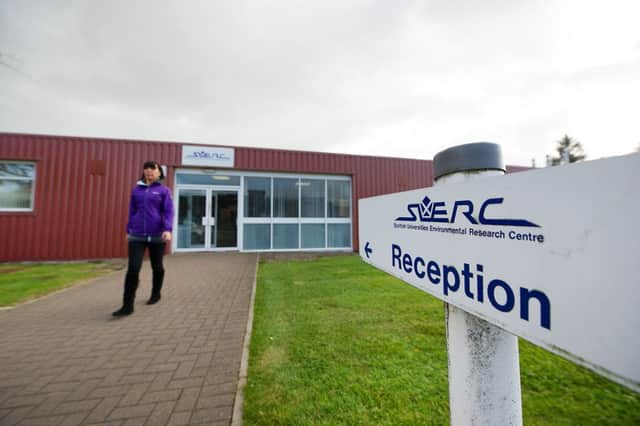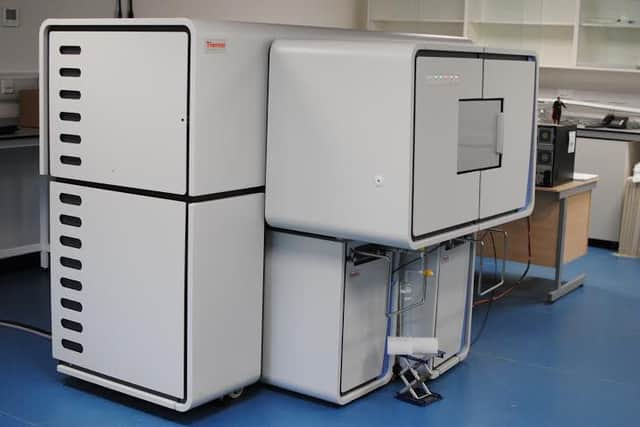Scots lab at the heart of groundbreaking discoveries


Despite the research centre being relatively uknown, professor Robert Ellam, director of the Scottish Universities Environmental Research Centre (SUERC) and his team work from one of of the largest isotope facitilies in the world.
Recently the Scottish scientists were behind the discovery of water on Mars.
Advertisement
Hide AdAdvertisement
Hide AdThe team were also one of two radiocarbon labs that dated the skeleton of Richard III.


“Initially, the dates appeared too old (by about 200 years) to be Richard III. We then looked at the stable isotope composition of the bone - roughly “you are what you eat” for these isotopes” Prof. Ellam explains.
“This indicated that the person had a diet that was rich in seafood, which is a sign of the high status of an individual.
“Because of the way carbon cycles through the oceans, modern seawater doesn’t have a zero radiocarbon age and a modern fish would give an age of about 400 years old. Using the stable isotopes, it was possible to correct for this dietary effect and the resultant age confirmed that this skeleton was within an age range that was consistent with it being Richard III.”
Alongside colleagues at the SUERC and in Glasgow University, Prof. Ellam has also been examining meteorites from Mars.
It was known that the meteorites came from the red planet as they contained gases in exactly the same proportion as the martian atmosphere.
He explains: “We did a whole bunch of chemical measurements but the main finding is that rocks on Mars have been altered through interaction with water – so water did once flow on Mars.
“Also, the alteration includes calcium carbonate minerals, like limestone, and that means carbon dioxide was involved. The obvious source is the martian atmosphere which is now quite poor in CO2 but, it seems was once somewhat richer.”
Advertisement
Hide AdAdvertisement
Hide AdThe SUERC has just completed a desk-based evaluation of an instrument that could further expand our knowledge of Mars.
“We evaluated whether it might be possible to put an instrument on a Mars lander that could measure the age of martian rocks without needing to return samples to Earth. This is currently being developed into a proposal to build a prototype with the view to getting a slot on a future Mars mission.”
A recent and exciting addition to the lab is the world’s first production model of the 253 Ultra mass spectrometer which they believe will place the SUERC in the front a new vision for how isotopes are used in Earch and environmental science.
The 253 Ultra is designed to measure “clumping” in molecules, a technique that has already been used at the California Institute of Technology through a prototype 253 Ultra which has two times as little resolution than its Scottish counterpart.
“Clumping is the tendency of molecules to incorporate rare isotopes. It turns out that clumping isn’t random with the tendency to form molecules being temperature dependent. A normal mass spectrometer would detect all the combinations that sum roughly to 47, the Ultra is going to be able to separate the different combinations.
“My favourite application so far (from CalTech) has been to demonstrate that modern animals demonstrate clumping in their bones. Cold-blooded reptiles are more clumped than warm-blooded mammals. Sharks, whose body temperature is controlled by the water they live in, were clumped exactly as expected for their environment. They then measured clumping in some dinosaur fossils and discovered that these dinosaurs were warm-blooded, like bird, not cold-blooded, like reptiles. My dinosaur expert colleagues tell me it is all a bit more complicated but wouldn’t it be cool to track the evolution from reptiles to birds (especially with some of the amazing fossils that are emerging from China?”
The so-called “clumped isotope” techniques are set to produce new constraints on things like past climate and the formation of hydrocarbons and other natural resources. “It turns out that clumping isn’t random with the tendency to form molecules being temperature dependent” Prof. Ellam says. “A normal mass spectrometer would detect all the combinations that sum roughly to 47, the Ultra is going to be able to separate the different combinations. We’re going to be able to tackle loads of molecules and loads of problems with clumped isotopes.”